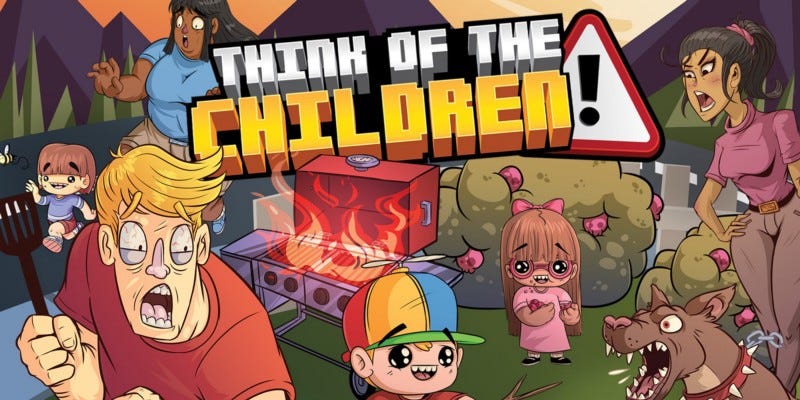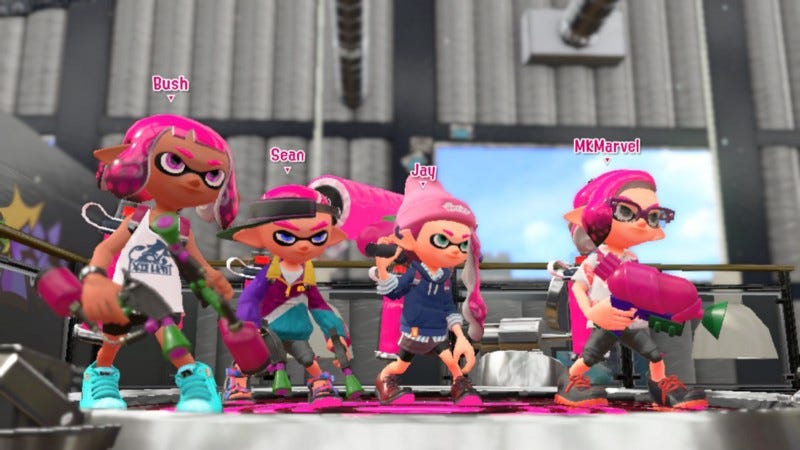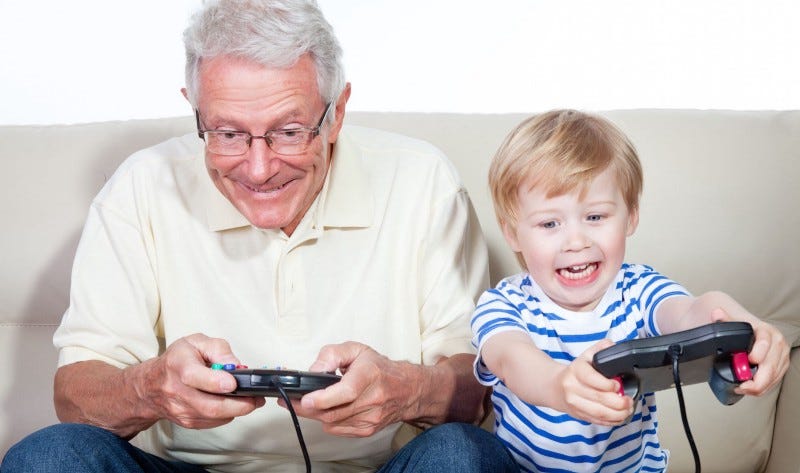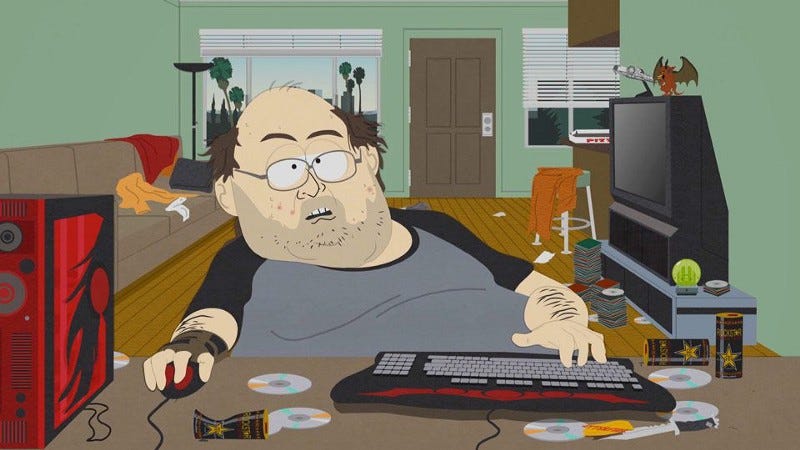The Genius of the “Nintendo Switch My Way” Super Bowl Ads
Nintendo makes another play at the mainstream
You may have noticed that gaming is my preferred blogging topic. However, I am a copywriter and communicator by trade, so I really should write about my craft more often.
Fortunately, I can write about both my profession and my favorite hobby, thanks to Nintendo’s brilliant new series of “Nintendo Switch My Way” commercials, just in time for the Super Bowl!
So, what are these ads, and what makes them so great?
The Ads
They say a picture is worth a thousand words, so a video that consists of thousands of pictures is clearly worth a million. With that in mind, instead of describing the ads, I’ll just show them to you:
In case you can’t see the embedded videos, you can watch the first three ads here, and the fourth ad here.
And if you still can’t see them, the ads all show people who are “adulting” while also playing their Switches—while the baby’s taking a nap, on an airplane, in a cab, while waiting to pick up the kids, and so forth.
Why Are These Ads Great?
The ads are genius on multiple levels: they’re relatable, they emphasize the Switch’s biggest benefits, and they successfully appeal to multiple target audiences.
The Ads Are Relatable
It’s clear that these commercials are primarily targeted at people who grew up playing Nintendo games. How do I know this? Because I’m one of them. Those of us who spent the ’80s and ’90s playing Nintendo games as kids are all in our 20s and 30s now.
Some have never stopped playing. Others completely drifted away. Others still are in between these two extremes. But what links us all together is the unfortunate fact that life has gotten in the way of our gaming.
Work, for example. As soon as we got jobs, those took priority in our lives. Those halcyon days of spending hours at a time playing Zelda, Final Fantasy, or Grand Theft Auto, or hosting all-night Smash Bros. and Mario Kart tournaments in dorm rooms or at sleepovers, came to an end.
For those of us who later had kids, our gaming lives became even more curtailed. Setting aside even a half hour of time to plop in front of the TV to play Dark Souls became impossibly difficult, to say nothing of ultra-time-intensive MMORPGs like World of Warcraft.
Gaming is a time investment, one that’s hard to make once you have work, a family, and other adult responsibilities.

But it’s not like we don’t have dead time. We have plenty of it: commuting, waiting in line at the DMV, and sitting for hours on an airplane, for instance. However, those moments are obviously not conducive to gaming (unless you count mobile gaming, which in my view barely counts, but that’s another topic for another day).
You can’t drag your 50-inch TV and PS4 to the DMV, after all.
Unless, of course, you own a Switch. Which brings me to my next point…
The Ads Highlight the Switch’s Main Benefits
One of the fundamental tenets of effective marketing communications is to emphasize the product’s benefits more than its features.
What does that mean?
A product’s features are the characteristics of the product itself, whereas the product’s benefits refer to the ways in which said features make the consumer’s life easier.
For example, when the iPod first came out, it had 5GB of storage—that’s the feature. The benefit? As Apple so eloquently pointed out in its ads, it’s “1,000 songs in your pocket.”
Now, back to the Switch.
The Switch’s defining feature is its revolutionary design that allows you to seamlessly switch between a TV-connected, home console and a portable, handheld console. Hence the “Switch” name.
This feature’s benefit? As the ads show, it suddenly opens up that dead time—those endless flights and long waits to pick up the kids from school—to gaming. You can sneak in some Super Mario Odyssey while sitting in a cab, or play Breath of the Wild while your baby naps right next to you.
The ads also depict the outcome of these benefits—in other words, the customer’s new and improved life after using the product. And outcomes, from a marketing standpoint, are even more persuasive than benefits.
So, what’s the outcome here?
All these gamers, whether completely lapsed or simply strapped for time, are finally able to enjoy their beloved hobby without it interfering with their responsibilities (or the other aspects of their lives).
They are able to fit the joy of gaming—which clearly provides them with some sort of entertainment, therapeutic, or even educational value—into their adult lives.
And while it’s hard to quantify, this undoubtedly provides a huge boost to their quality of life.
Bonus: Another Big Benefit!
But wait, there’s more! This isn’t the only big benefit the ads highlight.
Another Switch feature: its two controllers easily detach from the console—and you can give one to the person next to you, prop up the console with its built-in kickstand, and play a multiplayer game on the go.
The benefit here is obvious: you can play a game of pickup Mario Kart anywhere, anytime, with anyone.
The outcome of this benefit? Bonding. Bonding with your friends, family, or even random strangers you play with. Nintendo has already proven its uncanny knack for bringing people together, which is a logical outcome of the Switch’s multiplayer-conducive design.
The first three ads—the ones with the dads—take this a step further by showing parents playing with their kids.
As I pointed out, people who grew up playing Nintendo games are starting to have kids of their own now. As these new parents play the Switch with their kids, they get to share and pass on a great source of joy in their lives. They also grow closer to their kids, as tends to happen when parents and kids play together.
For a Nintendo dad, the appeal is both obvious and highly compelling.
The Ads Speak to Multiple Audiences
So far, we’ve been talking about just one of the ad’s target audiences: Nintendo kids who are all grown up but still want gaming to be a part of their lives.
The other target audience? Quite literally everyone else.
Nintendo is unique amongst video game companies. For one, it occupies a peculiar niche—Nintendo attracts a very particular type of gamer.

Back in the ’90s and ’00s, the company caught a lot of flack (and still does, to a certain extent) from “hardcore” gamers (whatever the hell that means) for making “kiddie” games, as well as making consoles that aren’t powerful enough to handle ultra-high-definition graphics.
As such, from the Nintendo 64 era onwards, Nintendo’s sales have consistently lagged far behind Microsoft and Sony’s, whose Xbox and PlayStation consoles constantly battle each other out for “hardcore” gamers’ loyalties.
At the same time, out of any video game company, Nintendo is the only one which had made anything even remotely resembling a credible bid for mainstream popularity.
The Wii best exemplifies this. When Nintendo announced the Wii, “hardcore” gamers and critics alike excoriated the company for it. The Wii was drastically underpowered compared to its competitors, didn’t even have an HDMI output, and the motion controls seemed gimmicky. The world thought Nintendo was crazy to release it.
So the Wii was a huge flop, forever consigned to obscurity, sinking Nintendo and any hopes it had of staying in the console business.
Psych! Obviously, I’m joking. You knew I was joking because everyone and their mother (and their mothers’ mothers) had a Wii.
The Wii went on to sell over 101 million units—by far the best-selling console of its generation, and one of the best-selling consoles of all time.
Nintendo sold so many Wiis because it wasn’t targeting “hardcore” gamers at all. Instead, it targeted folks who would otherwise never pick up a game—even people’s grandparents!

Now, with the Switch, Nintendo is making another play at mainstream adoption.
Just like with the Wii before it, the gaming press was skeptical: once more, they harped on the Switch’s underpowered specs (compared to the Xbox One and PlayStation 4), as well as its lack of third-party support and fairly barren launch library.
But just like the Wii, the Switch has proven those critics wrong. Nintendo has sold 32 million Switch units in the past 22 months—that’s barely short of the Wii’s 34 million units in its first 22 months, and more than the Xbox One and PS4 at that point in their lifecycles—and has shown little signs of slowing down.
It’s doing so because the stresses of adult life aren’t limited to gamers. Everyone can relate to those.
The rest of the world, however, doesn’t usually think of gaming as the kind of stress relief they could fit into their lives (mobile gaming aside).
But with these ads, Nintendo is very clearly saying they can—and should—give games a go (and on the go).
The choice of portrayals plays into this message, too. Gamers are often stereotyped as being antisocial, neckbearded shut-ins who live in their parents' basements, harass female developers, and spend all day going on raids.
But these ads are portraying normal, ordinary people: a businessperson on an airplane, friends at a football tailgate, a parent taking care of his baby.
This sends the message that gaming is not just for a small, self-selecting group of “hardcore” fanatics, but for ordinary people as well.
(And the data bears this out. A 2016 industry survey found that 63% of US households include at least one gamer, nearly half of all gamers are between the ages of 18 and 49, and 41% of gamers are women. Doesn’t quite fit the neckbeard stereotype, does it?)
Nintendo’s choice to air these ads during the Super Bowl, quite possibly the most mass-audience, mainstream event ever, also underscores this.
Nintendo is, once again, normalizing and democratizing gaming.
Just like with the Wii’s ads, Nintendo’s on-point marketing for the Switch is educating the masses that gaming is accessible to them.
This potent combination of a phenomenal product with incredible marketing is clearly paying off for Nintendo—remember, they’ve sold 34 million Switches so far—and if Nintendo can keep it up, it will make gaming history yet again, just like it did with the Wii and even the NES before it.
Jay Rooney is a copywriter, communications professor, and lifelong Nintendo fanatic living in the San Francisco Bay Area. All screenshots were captured by him, on his Switch. His favorite Switch game is Breath of the Wild. He mains Ness and Link, and his friend code is SW-2888–2425–3008.









I’ve been wanting a switch because of these reasons. Playing on the go is just a pipe dream at the moment, ( unless you like carrying 50 pounds of equipment). Also the games they put out are amazing since vibrant single player/co-op games are my favorite; e.g., Super Mario.